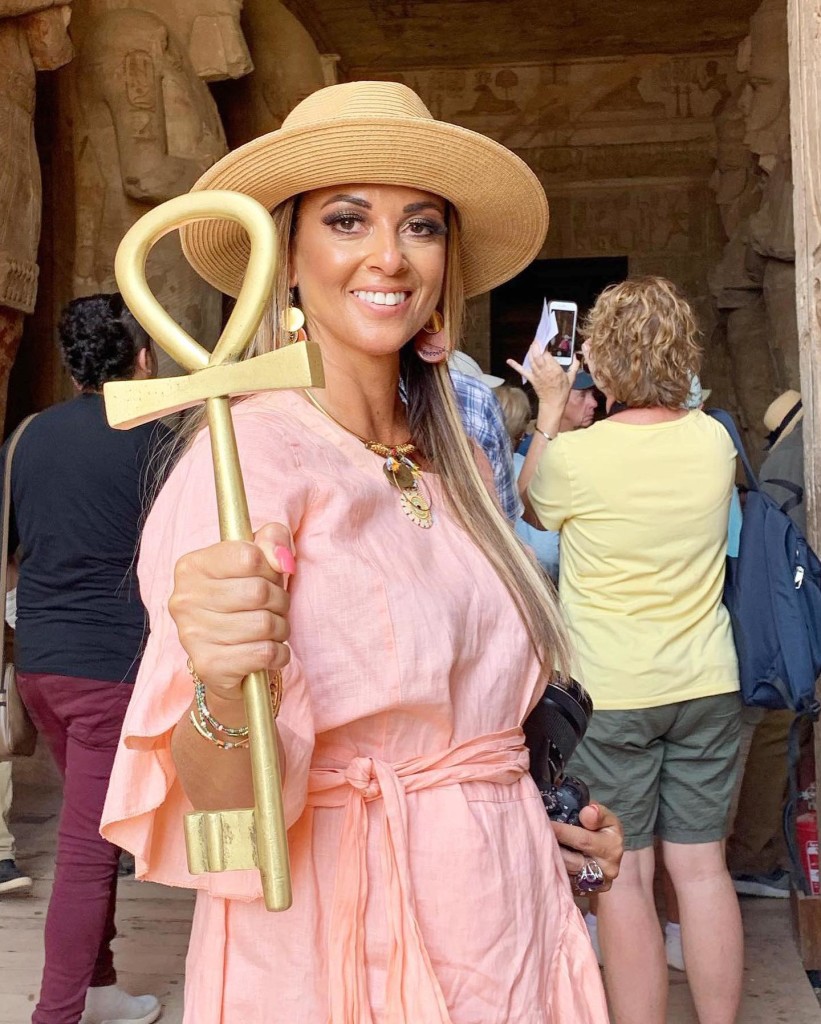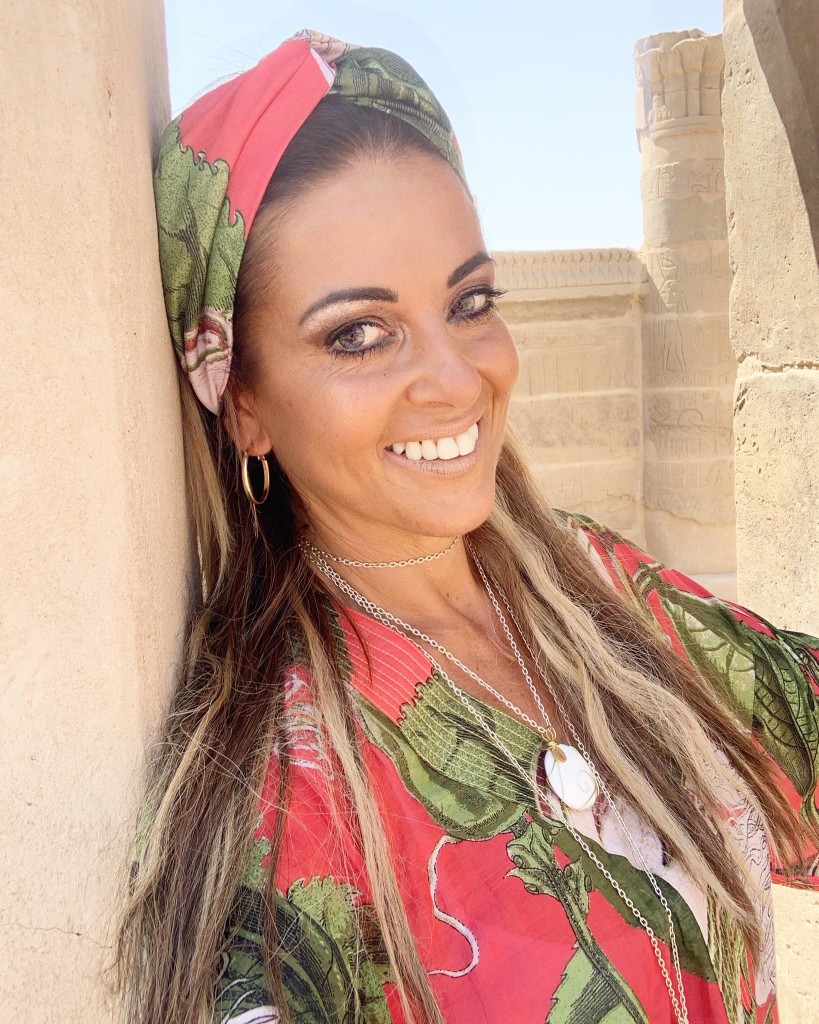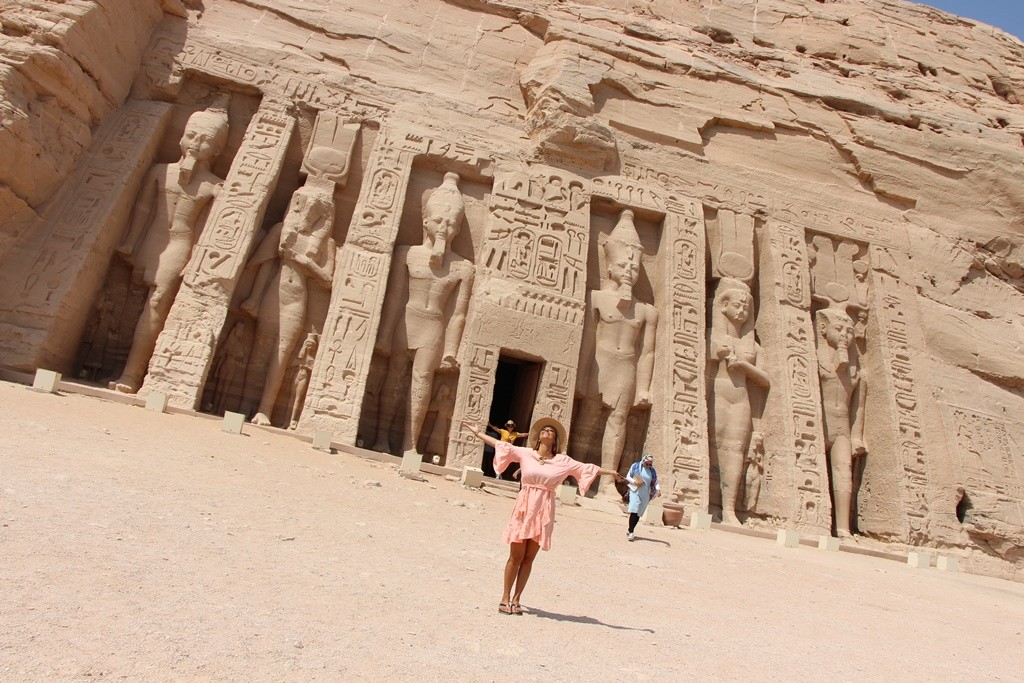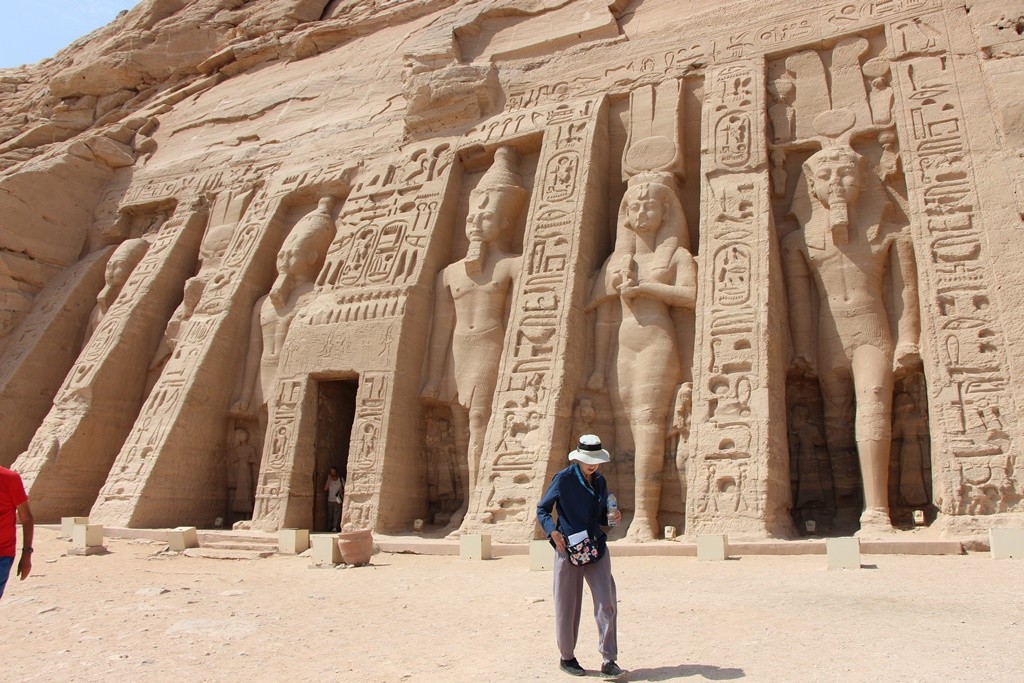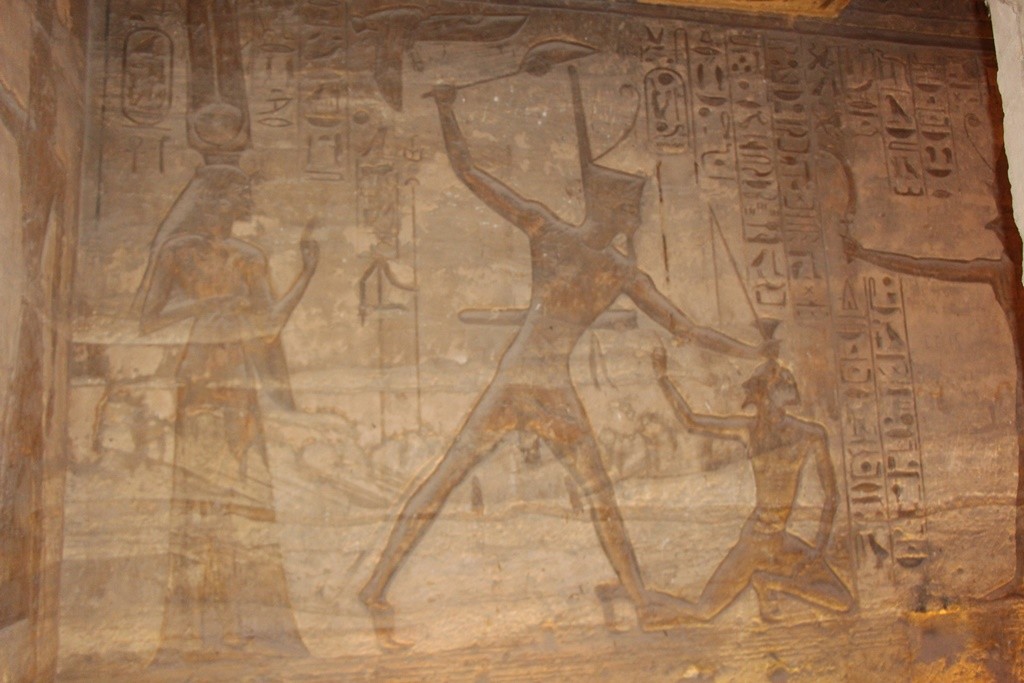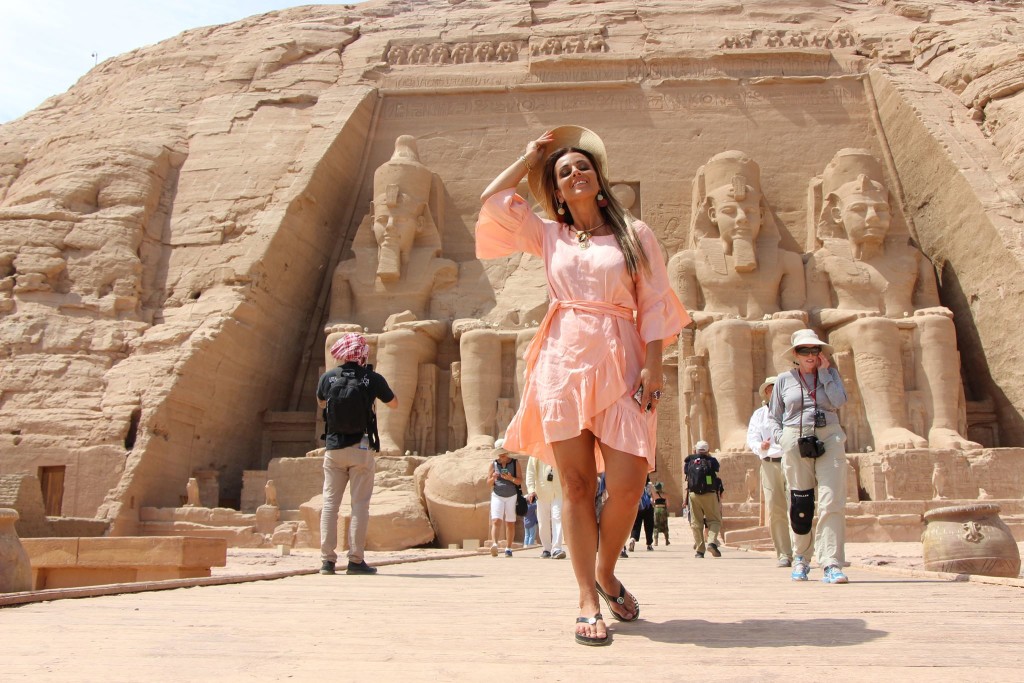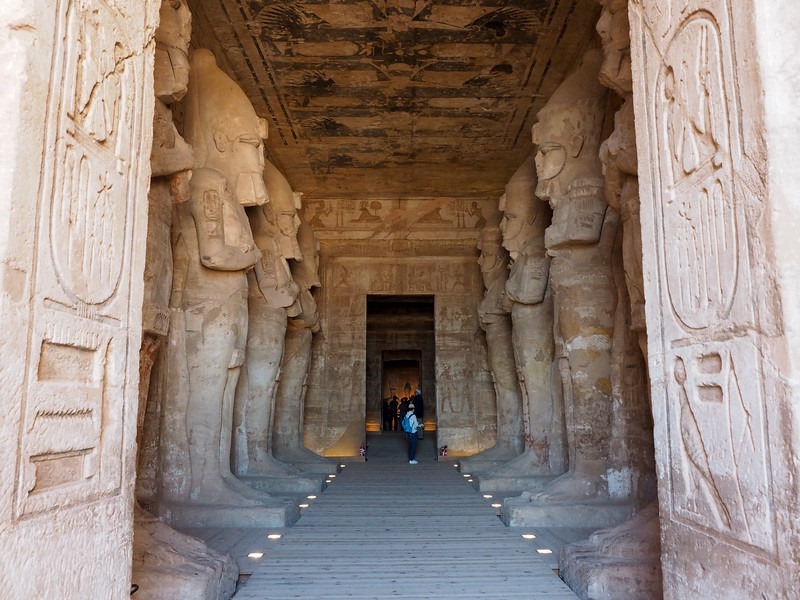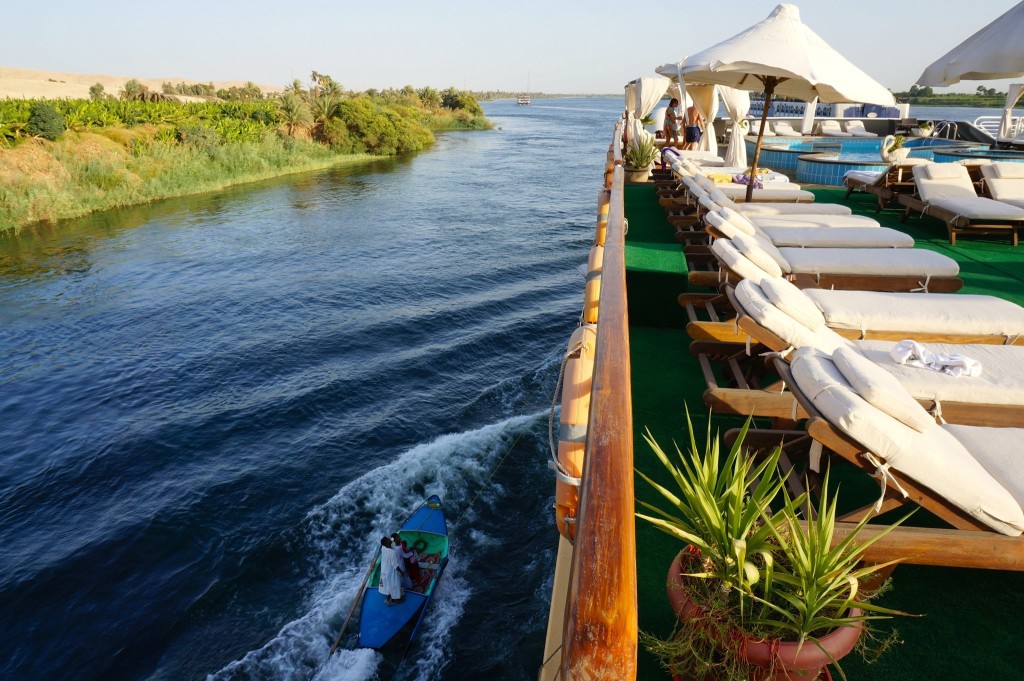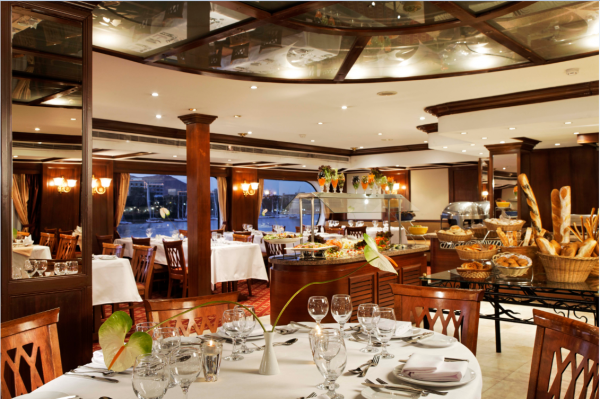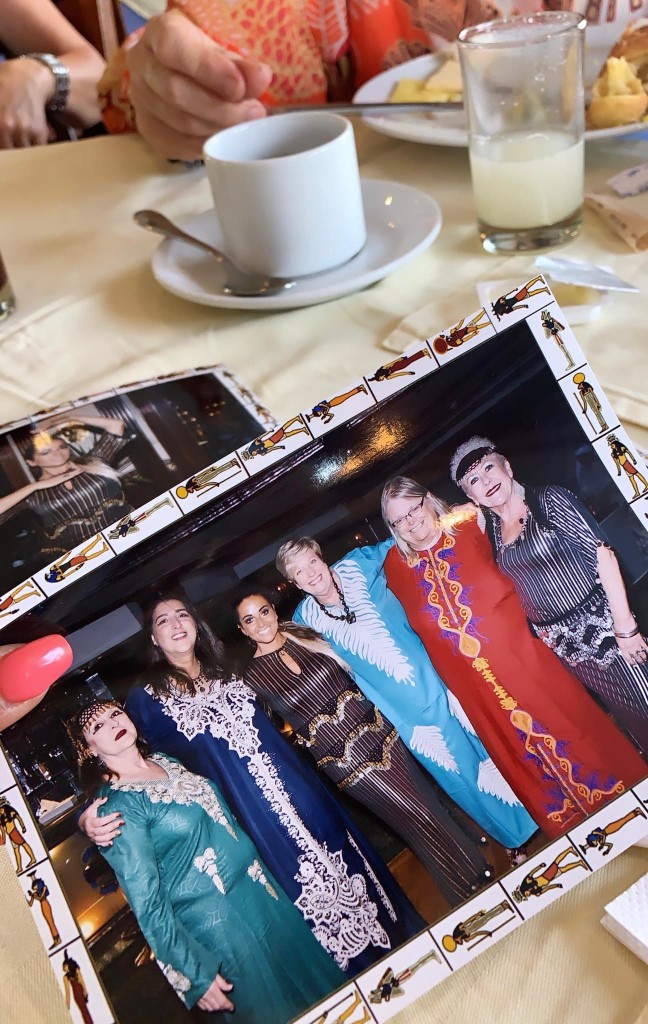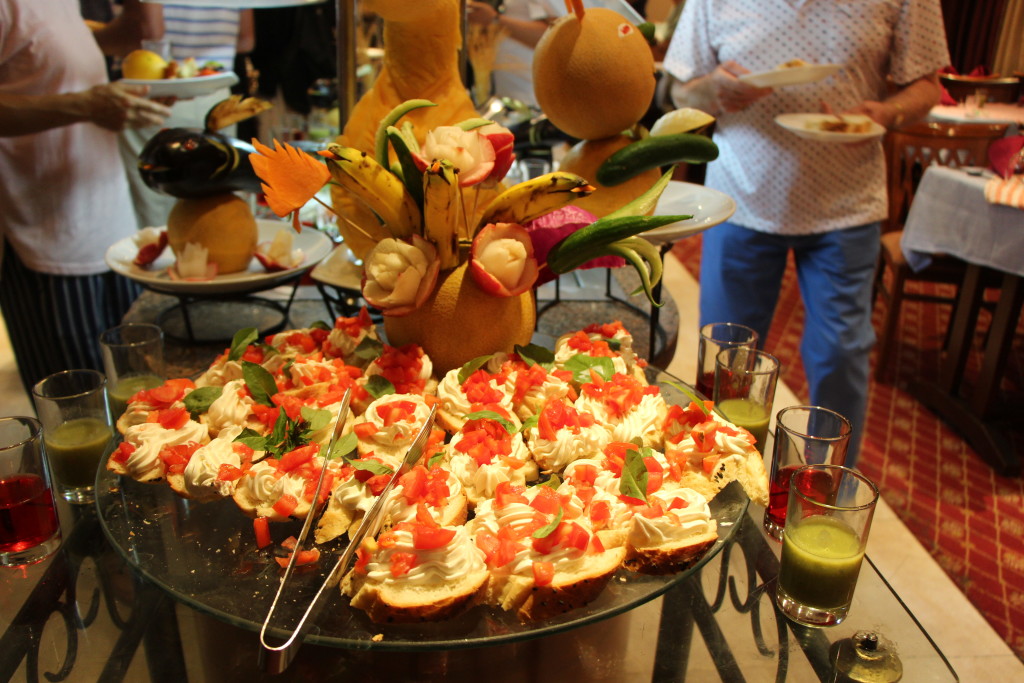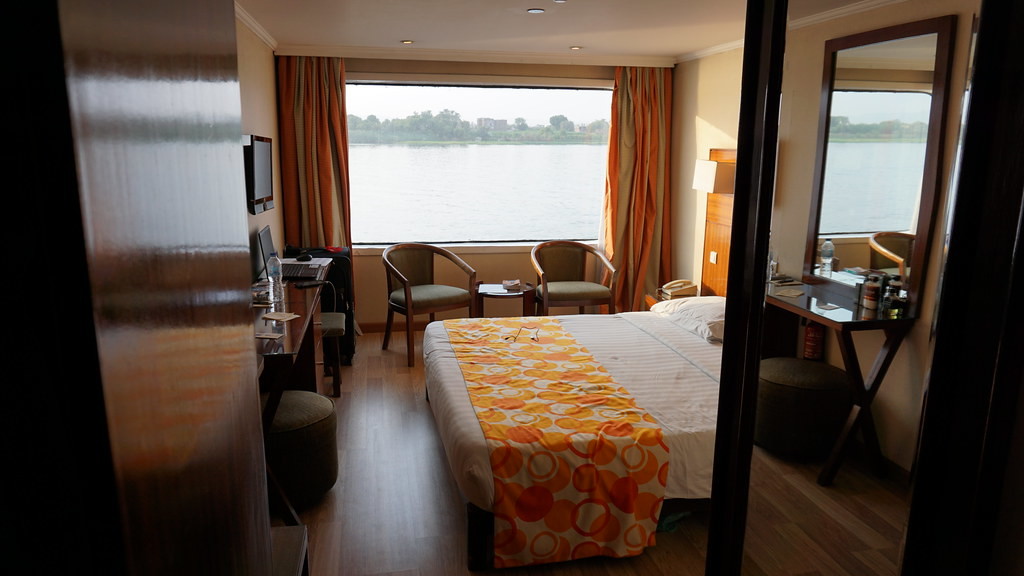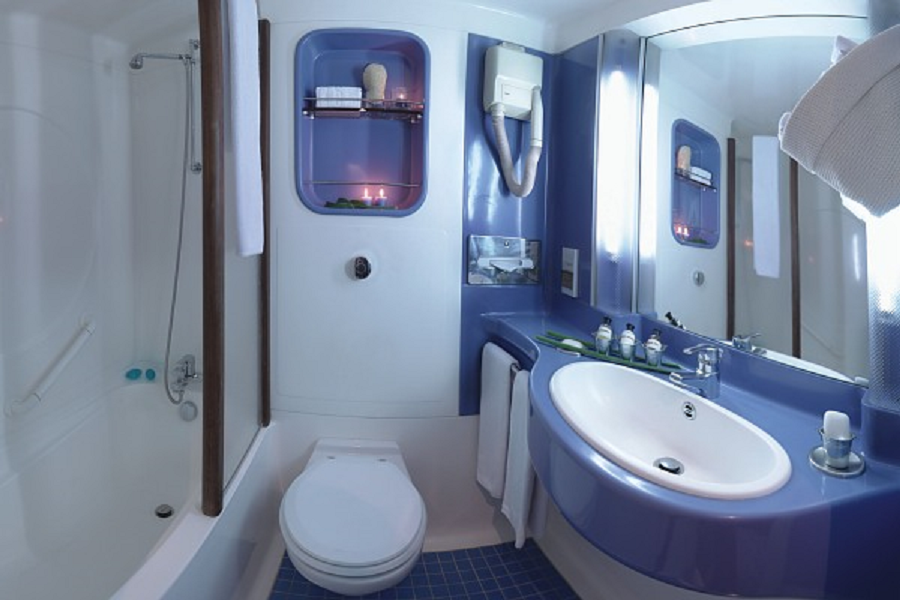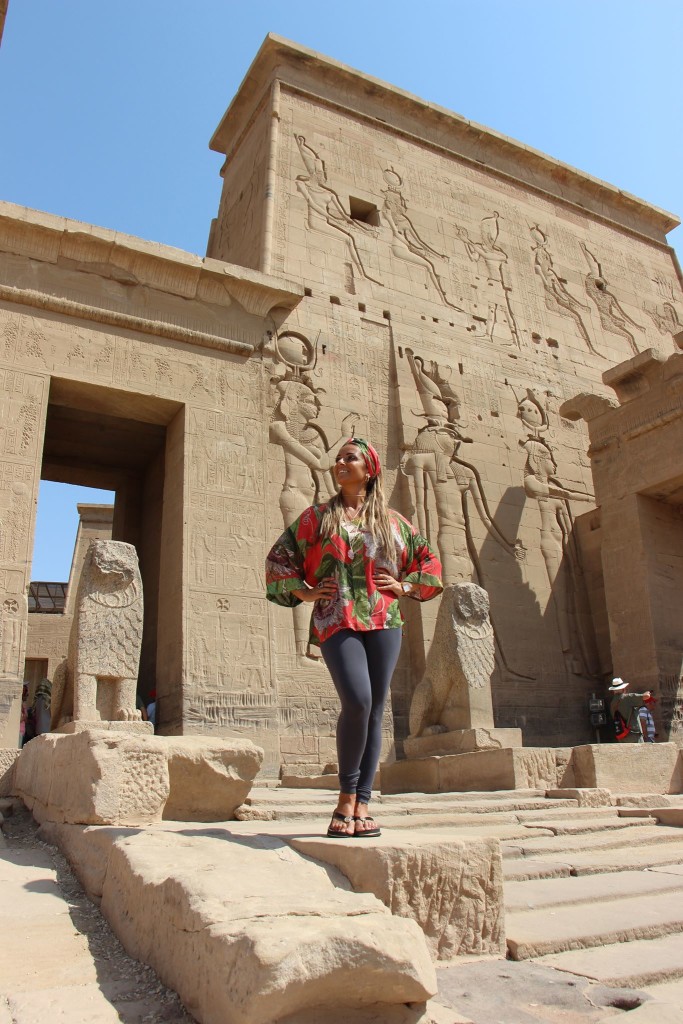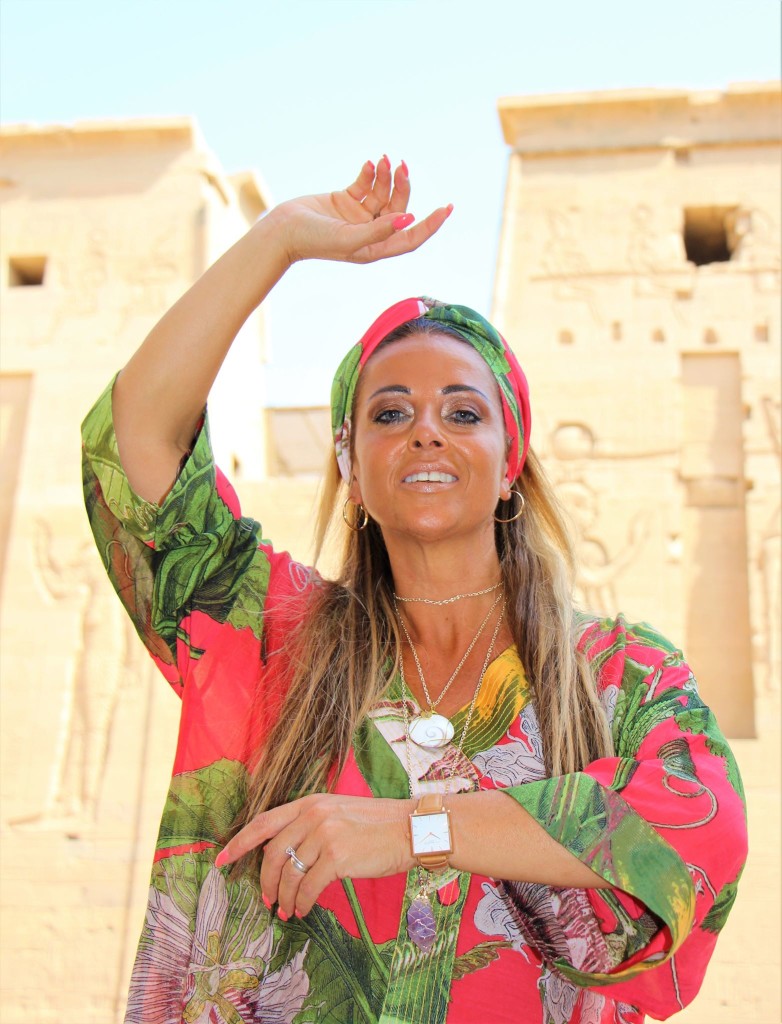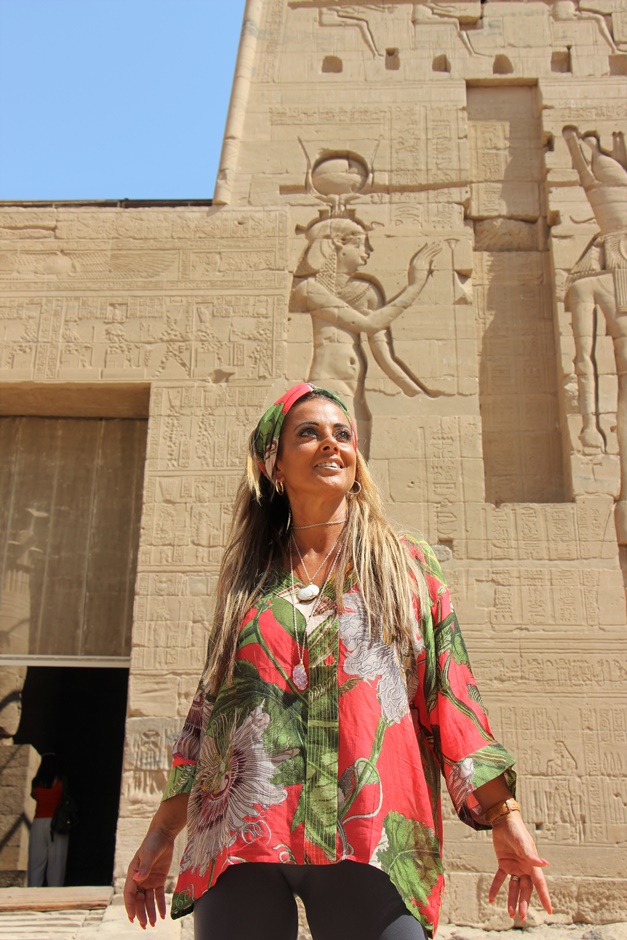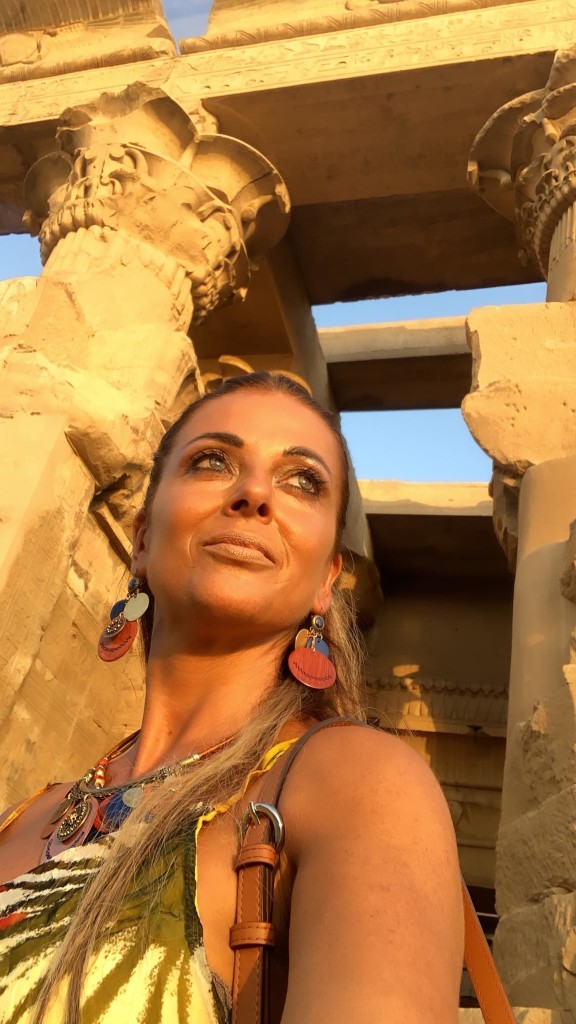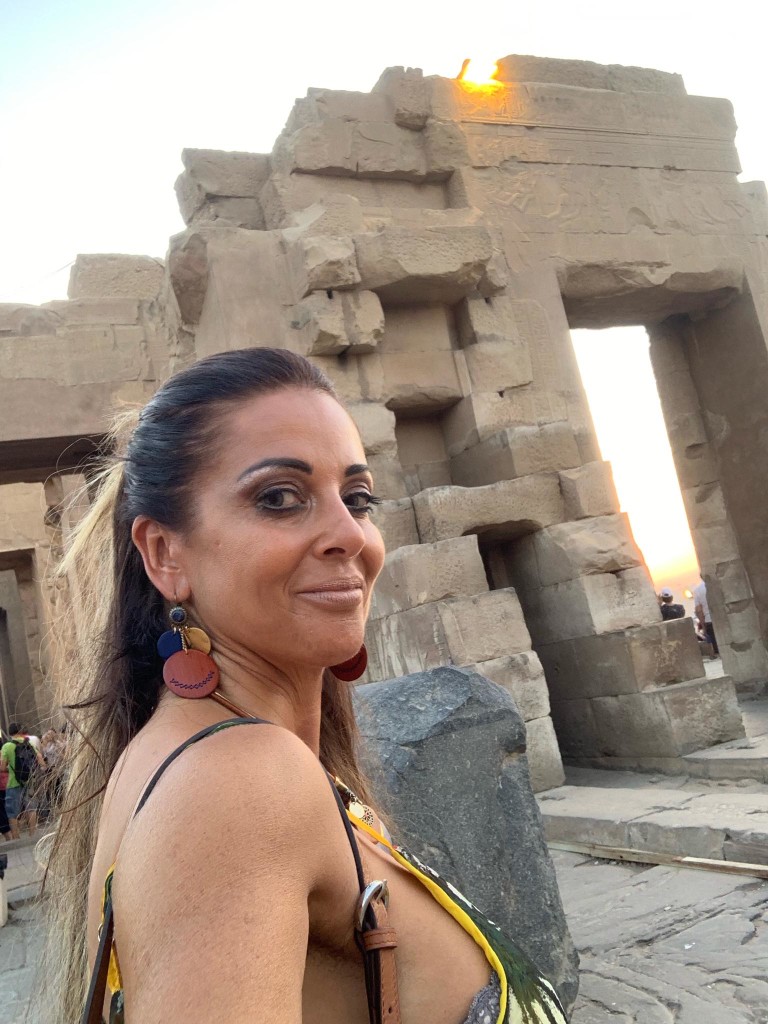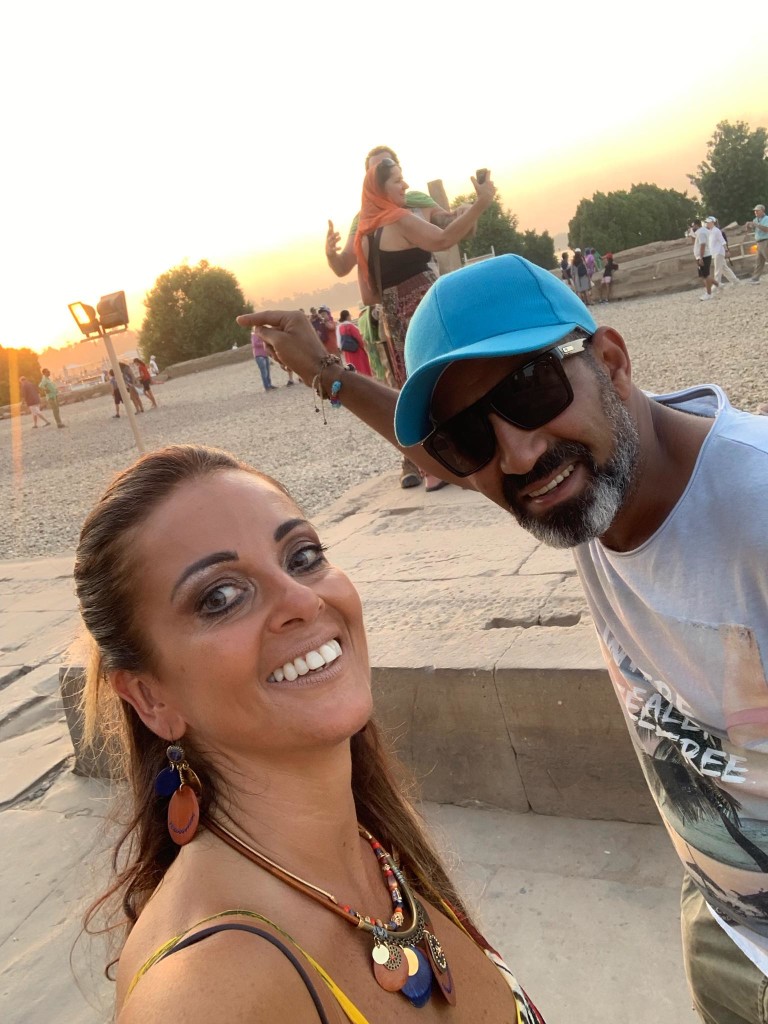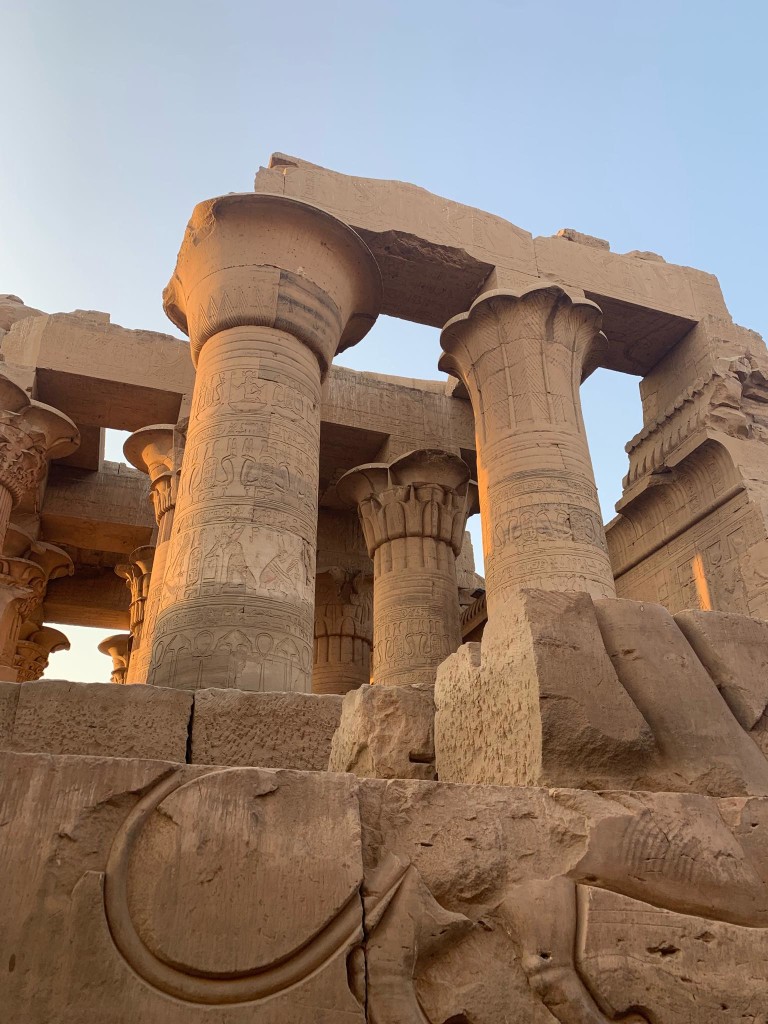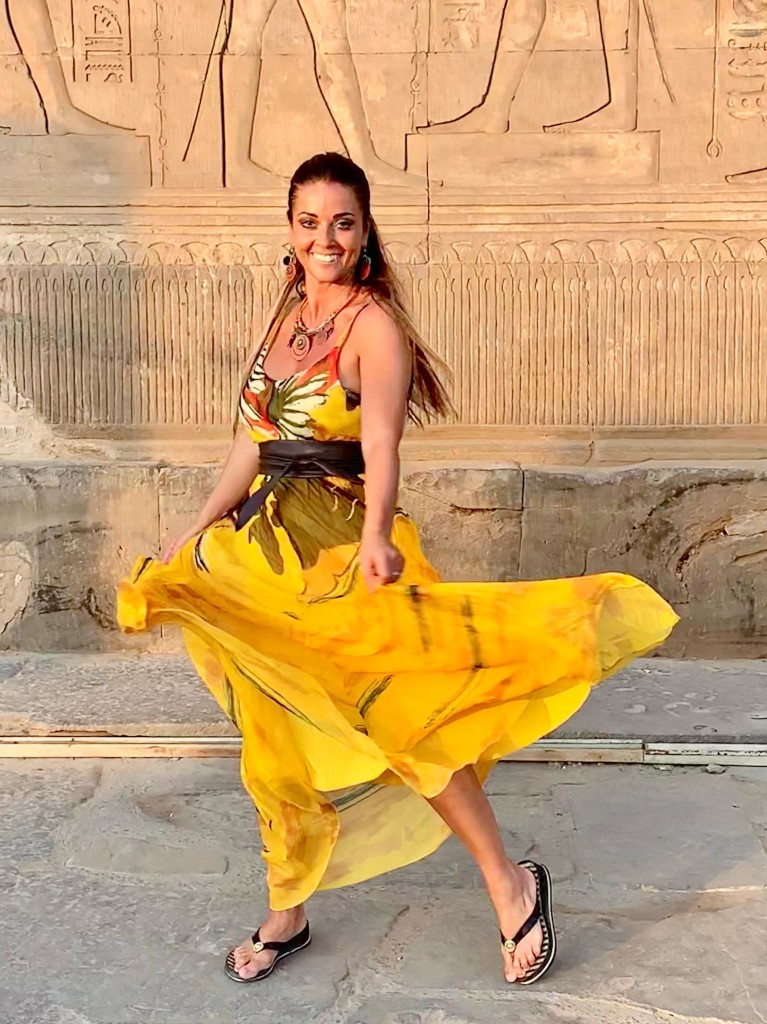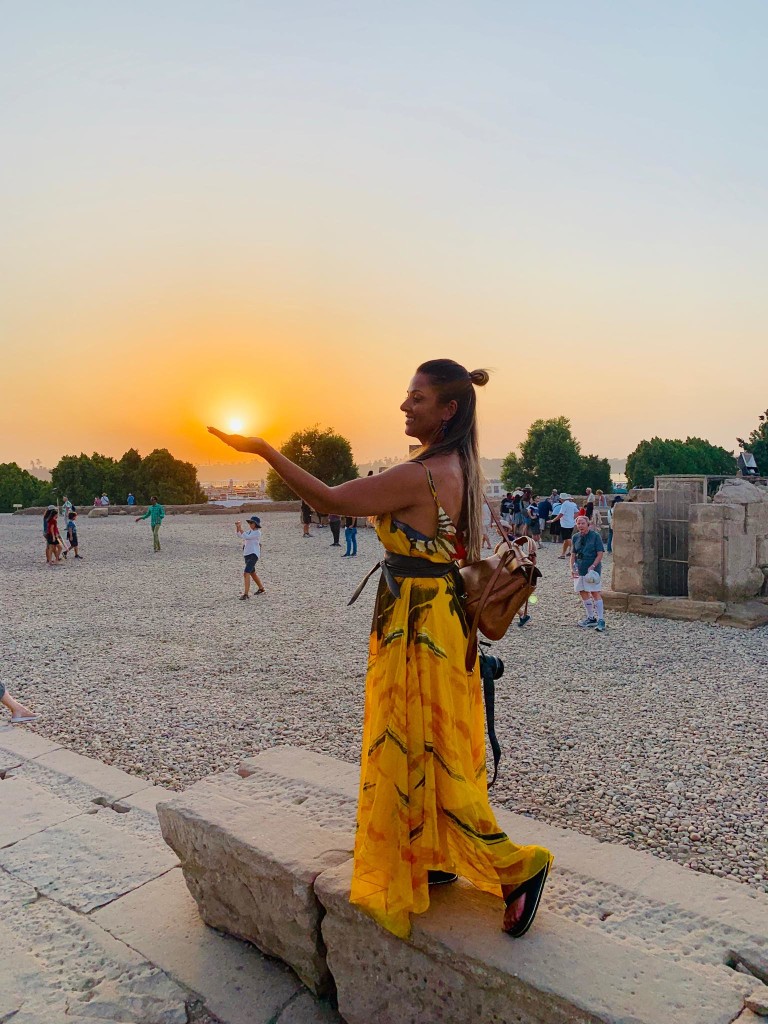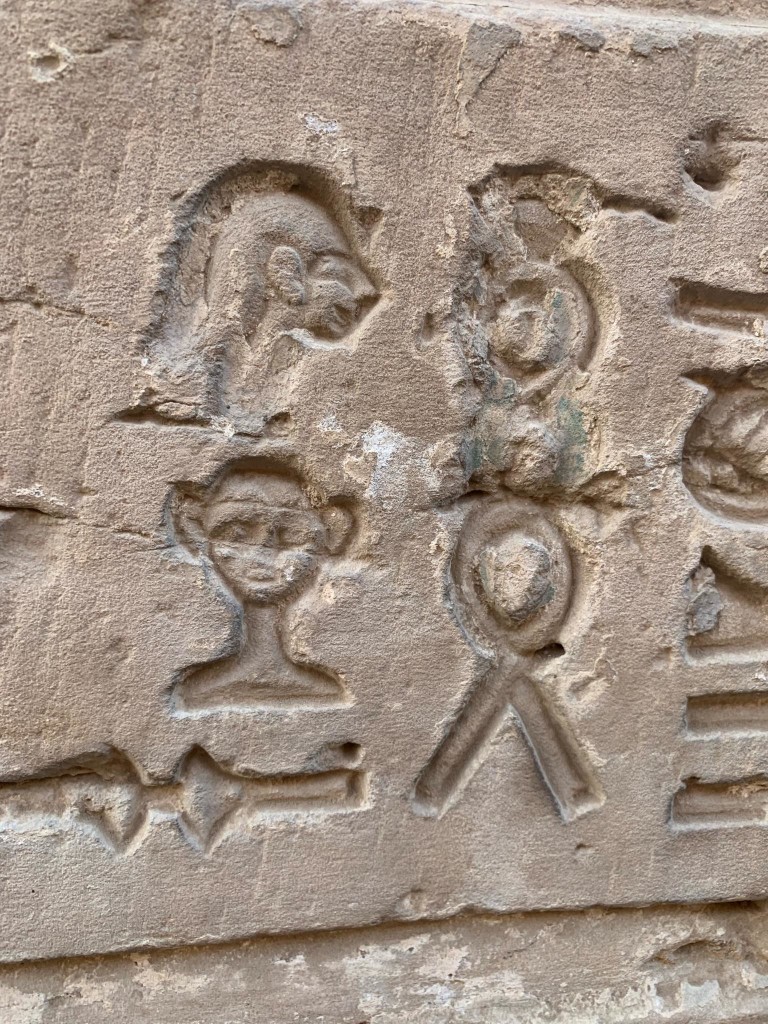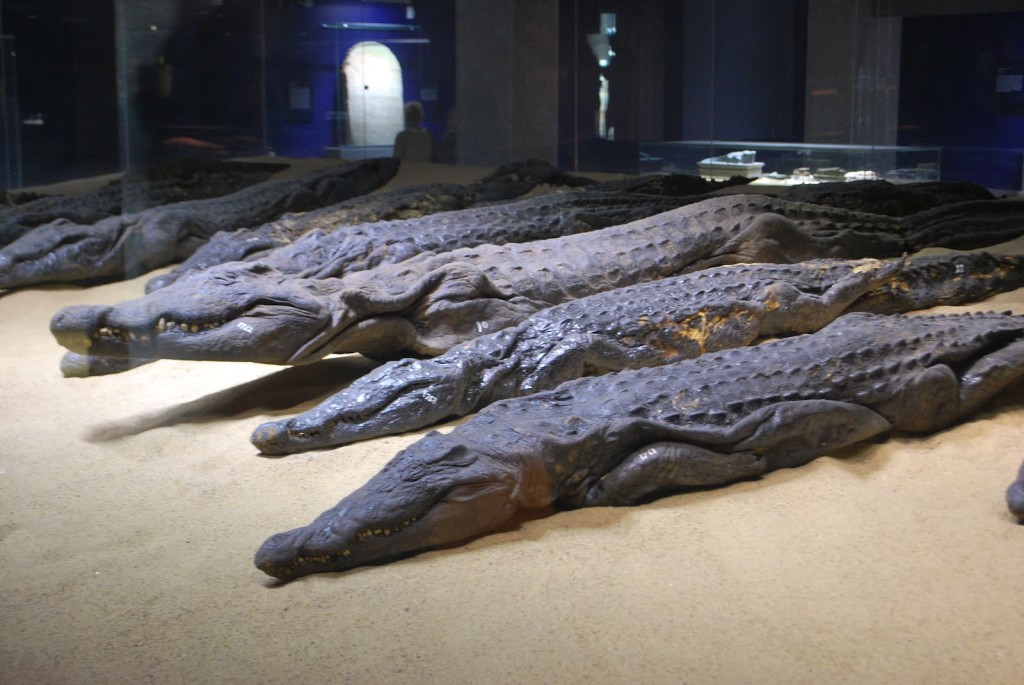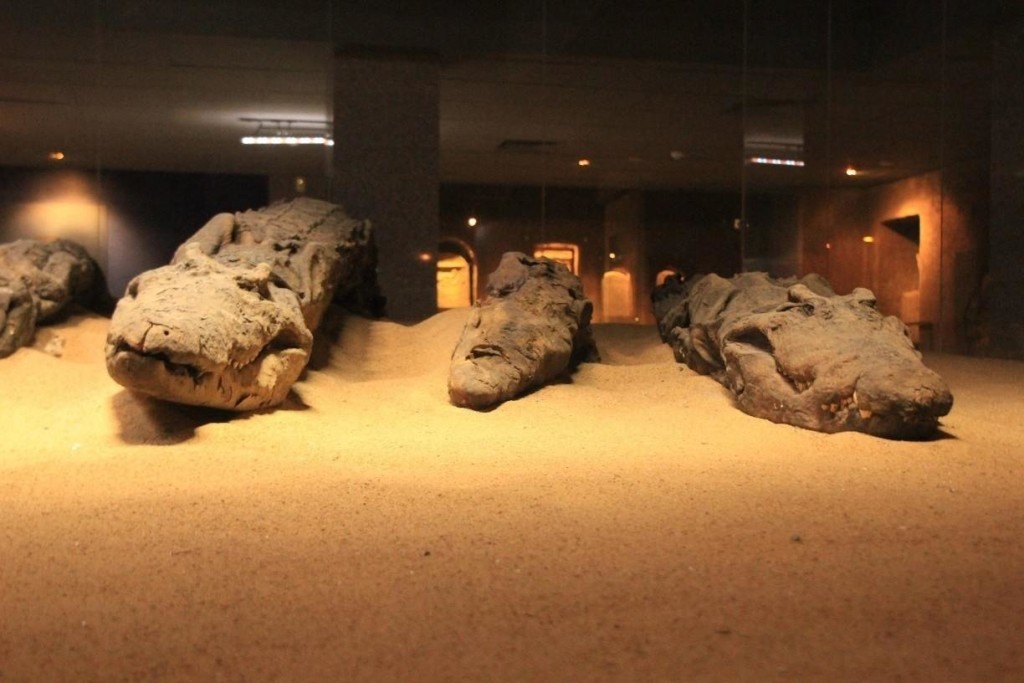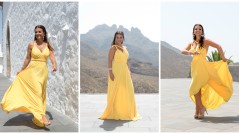This is the first blog about my trip to Egypt with Rami’s Insight Tours and Airmalta
Highlights include:
*Abu Simbel Temples, Aswan,
*Isis Temple, Aswan
*KOM OMBO Temple & Crocodile Museum
*The Nile Cruise aboard the Radamis floating hotel
Hello my friends. Thank you for connecting with me through my Blog. Is Egypt is a place you have been dreaming of visiting? Yet you are fearful of its safety. You have been looking at books, websites, documentaries all your life, wishing you could see with your very own eyes the awe inspiring monuments and artifacts and tombs discovered to date – and yet you’ve been cowering behind excuses? You know what? You’ve been brainwashed and until now we have not had enough courage to face the truth. The Truth is that you are scared it will impress you so much that you might have to tell many stories when you get back home. Truth is you are scared you might have to visit over 40 times to maybe see some of all the hidden magic it offers to the adventurers who come from all over the world for a tiny glimpse of the truths behind civilizations who were much more advanced than we are today in 2019 heading into 2020. I’m not saying that there have not been terrorist attacks in the past, but there also have been in places like Las Vegas and France which are considered safe places. The important thing is that you travel with a guide who will know exactly which places to take you with the proper documentation required.
When you are ready to shed your fears and awaken, Egypt will start to call you like a mother calling it’s children back home, for I believe in my heart that this place, apart from its evident historical attractions and mysterious archaeological monuments, this is a place where the soul and heart can reclaim some of their lost parts back, where the children of the Earth who feel a connection to it, will receive blessings of new wisdom and energetic benefits from its terrain and the symbols hidden in all the inscribed temples and walls that still exist for us to enjoy.
 Can you try to imagine the size of the largest pyramid in Giza compared to me standing a quarter of the way up?
Can you try to imagine the size of the largest pyramid in Giza compared to me standing a quarter of the way up?
Who built these pyramids, how and why? I don’t believe the original use was to be a tomb.
Egypt is a place where one can empower oneself. This will be a very personal journey for everyone depending on where they are in their life path. For me, its a powerful spot for soulful and energetic healing, take it as you may. This is a place of contrasts. Poverty alongside richness. Bland colours from the sand and the dust to the brightest colours from the fabrics and the lush greenery in the cultured fields along the Nile. One will be mesmerised, humbled, struck by the culture difference from other places in Europe or anywhere in the world, the people are so kind and despite living a simple life, they feel whole and complete.
The kindness and the compassion shown by local people will awaken you to see how materialistic the western world has become and you can only be grateful to learn from them how life can be lived fully and happily without the need for too much materialism. For it is with the soul that we depart to the afterlife and it is the Only thing we take with us from this human experience. The teachings received from the writings on the walls of all the temples in Egypt show how dedicated they were to the afterlife and they are still not all explained in full and I am sure that their interpretation will keep changing as our human consciousness expands.
Why are the pyramids and the sphinx in this part of the planet, not in the US for example? Who built them? What can we do with them in this day and age? Can they be re activated to their full use again some day? What other discoveries will be uncovered in Egypt, even after I leave my human life? What truths will our children learn from Egypt? All these are things constantly on my mind as I enter the airport to this land of splendour and mystery.
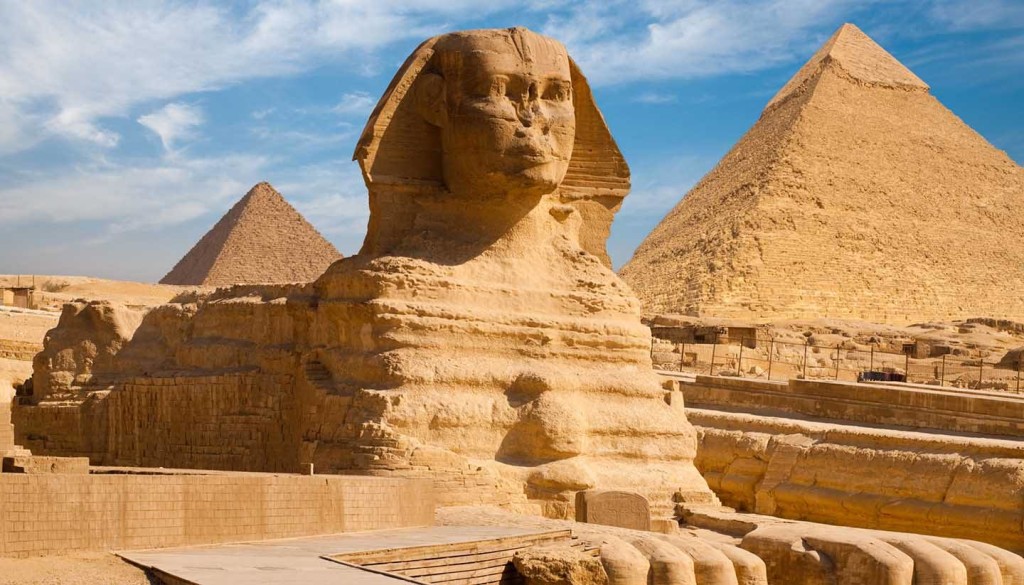 The Sphinx and the largest pyramids in Cairo
The Sphinx and the largest pyramids in Cairo
The ankh is an ancient Egyptian hieroglyphic symbol that was most commonly used in writing and in Egyptian art to represent the word for life and, by extension, as a symbol of life itself. The ankh has a cross shape but with an oval loop in place of an upper bar.
Outfit: Porto Malta / Gemstones & Jewellery by GC
DIRECT FLIGHT – MALTA TO CAIRO – Airmalta
Without further ado, let me begin writing about the actual physical journey which began from the airport in Malta checking in my 20 kilo allowance luggage and myself at the Airmalta check in desk at 9.30 pm to be able to catch the 11.30 pm flight to Cairo. I travelled alone this time, not with my husband because he was busy with work commitments and I was not worried at all. I trusted that the minute I land, I would be taken care of 100 % by Rami and his team at Rami’s Insight Tours, Egypt who had already took full care of me on my trip in April this year. The Direct Flights Now Available every week by Airmalta are only 3 hours long and are now available regularly as of September 2019. How fortunate are we residents in Malta?!
From 1 September, the airline Airmalta started flying from Malta to Cairo on Thursdays and Sundays, and from Cairo to Malta on Fridays and Mondays. The flights will continue throughout winter, with Air Malta CEO Clifford Chetcuti saying there are plans to increase the schedule to three weekly trips next summer 2020!
I arrived safely at Cairo airport. I had someone waiting for me to get through the passport checks and within minutes I was welcomed to Egypt with a smile. A month prior to travelling I had applied for an E-Visa which was accepted within 24 hours. To apply for en E-Visa Click HERE
LET’S GO GO GO!
This time, the first part of the vacation was going to be in Aswan, so I caught a connecting flight to Aswan which is about 45 minutes long with Egypt Airways and once I arrived, there were Rami and his two assistants waiting for me to hit the road right away to visit the first sight – ABU SIMBEL TEMPLES! Adrenalin starts to kick in. I’m back! Grazielle is back! 4 hours later after stopping for coffees and toilet stops and impromptu belly dancing stops on demand en route, we arrive at Abu Simbel – Worth all the travel indeed!
The site of Abu Simbel is one of Egypt’s most awe-inspiring structures you will ever see. Comprised of two majestic temples overlooking Lake Nasser this landmark has a storied history, both ancient and recent. In the 1960s the temples had to move due to the rising water levels of Lake Nasser which were elevated because of the construction of a new high dam in Aswan.
The rescuing mission of Abu Simbel temples started in 1964 by the most skilled archeologists and engineers under the UNESCO banner. The relocation process cost $40 million. The large blocks were cut, dismantled, lifted to a new location 65 meters higher and 200 meters back from the river. It was one of the greatest challenges of archaeological engineering in history.
Each temple was carefully sawed apart, moved and reconstructed over the span of almost five years. It was no small feat to move the two temples that were over 3000 years old and ensure that they would safely be re-created. Luckily for us today, the dismantling and reconstruction were successful and thousands of tourists visit every year.
Getting There
Abu Simbel is a small village in the southern region of Egypt, 25 miles away from Sudan. The closest major city is Aswan. Abu Simbel has its own airport and a few hotels and hostels but Aswan provides more options. Abu Simbel is about a three-hour drive away from Aswan and there are many tour operators that can take you there. Rami’s Insight Tours organised everything for me and the group. I do not advise you to try to rent your own car and drive there as you need to be a licensed operator to pass security checkpoints. In Egypt, security is top priority so if you are not a local, you will find it difficult to manoeuvre these visits on your own.
Description of Abu Simbel Temples
The construction of the temple started in 1264 B.C and lasted until 1244 B.C. the purpose of the two temples was to impress Egypt’s southern neighbours. At the entrance of the temple, there are figures of Ramses II that are 20 metres tall. Small figures of Ramesses’ children, his queen, Nefertari, and his mother, Muttuy are carved around the statues. There is graffiti inscribed that have provided important evidence of the early history of the Greek alphabet here too. Abu Simbel Temples can be divided into two main temples.
1) The Great Temple of Ramses II
This was dedicated to the sun gods Amon-Re, Ptahand Re-Horakhte. The 4 seated colossi in front of the temple were sculptured from the rock in the temple before the temple was moved. All statues in the temple represent Ramses II seated on a throne wearing the double crown of Upper and Lower Egypt.
The inner part of the temple is similar to the ancient Egyptians temples. It has rooms and its structure is complex and unique because it has many chambers. There is a hall that is 18 m tall and consists of eight huge pillars that depict Ramses linked to the god Osiris. There is a second pillared hall that consists of four pillars decorated with beautiful scenes of offerings to the gods.
2) The Smaller Temple of Queen Nefertari
The temple of Hathor and Nefertari, which was built about one hundred meters northeast of the temple of Pharaoh Ramses II. It was dedicated to the goddess Hathor and Ramesses II’s chief consort, Nefertari, the most beloved wife for Ramesses. Interesting to note that Nefertiti was the first queen to have a temple dedicated to her by Akhenaten and Nefertari was the second one to have such a chance. The statues are more than two meters high. On the sides, there are statues of the king.
The hall of the statue is supported by six pillars, which is followed by an entrance hall. Ramesses II and Nefertari are depicted making offerings to god Horus on the west wall of the temple. The priest on each temple represents the king in his daily religious ceremonies.
INTERESTING FACTS ABOUT ABU SIMBEL TEMPLES
• The temple was mainly constructed to celebrate the victory of Ramses II that was constructed during the Hittites at Kadish battle in 1274 B.C.
• The marvelous temple of Abu Simbel was dedicated to a number of ancient Egyptian gods such as Amun, Ra-Horakhty, and Ptah.
The huge complex of Abu Simbel consists of two temples, the grand temple and the small one.
• It was discovered in 1817 by the EgyptologistGiovanni Battista but the Swiss researcher Johann Luding was the one who managed to explore the temples.
• One of the most important Egyptian phenomena is the Solar alignment over the grand temple, which happens twice the year, once in 22nd from February and in 22nd from October and both dates reflect the date of Ramses II birth and his coronation.
• There aren’t any other temples for Ramesses’ wives except for Nefertari.
• There are great hand carved pillars, statues, beautiful carvings, and a lot of other interesting things that delight anyone while looking at them.
• It is the second largest touristic attraction that was said to be built by humans in ancient Egypt after the Pyramids.
The two temples of Abu Simbel are the most interesting historical places in Egypt, which attract thousands of tourists all over the year so it is worth planning it in your Egypt Tour Package.
CRUISE ON THE RIVER NILE
Next on the Itinerary planned with Rami’s Insight Tours was to spend three nights and four days aboard a floating hotel. This way we could enjoy the River Nile, hop on and hop off at the sightseeing sites close to the river bank and we could connect with the group and have some free time to relax and also do some meditation workshops with Ella which is something I also booked in the package this time! I wished for a holistic approach this time and I m very pleased I went for that option.
There are many floating hotels available. We were booked to be on the Radamis Floating Hotels cruises which are managed by Movenpick Hotels International, a Swiss hotelier company famous for their excellent service, wonderful cuisine and warm hospitality. Cruises are offered conveniently all year round with departures 3 times per week. It was my first time visiting the River Nile and first time on a cruise like this in Egypt.
I must say that we had excellent amenities, exquisite buffets for breakfast, lunch and dinner. We had different cuisine themed nights together with some entertainment on board including a Galabeo party. I danced so much in great company with all these lovely people from all over the world!!
Some facts about the River Nile sourced from National Geographic
Did You Know?
A) The Nile no longer floods each year, however. This is because in 1970 the Aswan High Dam was built. This huge dam controls the flow of the river to generate electricity, irrigate (water) farms and provide homes with drinking water.
B) This fascinating river remains an invaluable source of life for Egyptians to this day. More than 95% of the country’s population depend on its water and live within a few miles of the river banks.
3 ) It’s not just important for humans – the river and its banks are home to lots of wonderful wildlife, too – including different kinds of fish and birds, as well as turtles, snakes, hippos and one of our planet’s largest reptiles… the Nile crocodile!
Thanks to this Nile cruise trip, we got to see a number of sights comfortably.. The first one was Isis Temple which is one of my favourites to date.
The food on the cruise was outstanding with breakfast, lunch and dinner buffet included in the package. We had different themed nights and my favourite evening was the one in which we had to dress up in their traditional Egyptian Galabeo costume and dance it off on the dance floor. With Rami, you certainly have to dance. Sitting still is not an option!
During the days when we had some time off, we chilled on the top deck by the pool and had some interesting conversations. The views from the boat were so relaxing – trees on either side for miles as far as the eye can see.
Internet on the cruise is something that could be improved. I couldn’t get any work done on my laptop. I took it as a sign to totally switch my work mode to “off” and deal with work stuff upon my return. This experience was very important and it ‘s not so many times you get to explore these wonders of the world in a week so I decided to immerse myself into full vacation mode and use my energy to connect with the sightings and the people along this trip. For me this was the first time I travelled in a group and I must say that despite the different nationalties and age groups and personalities, I did pretty Ok and I had a lovely time with everyone I met!
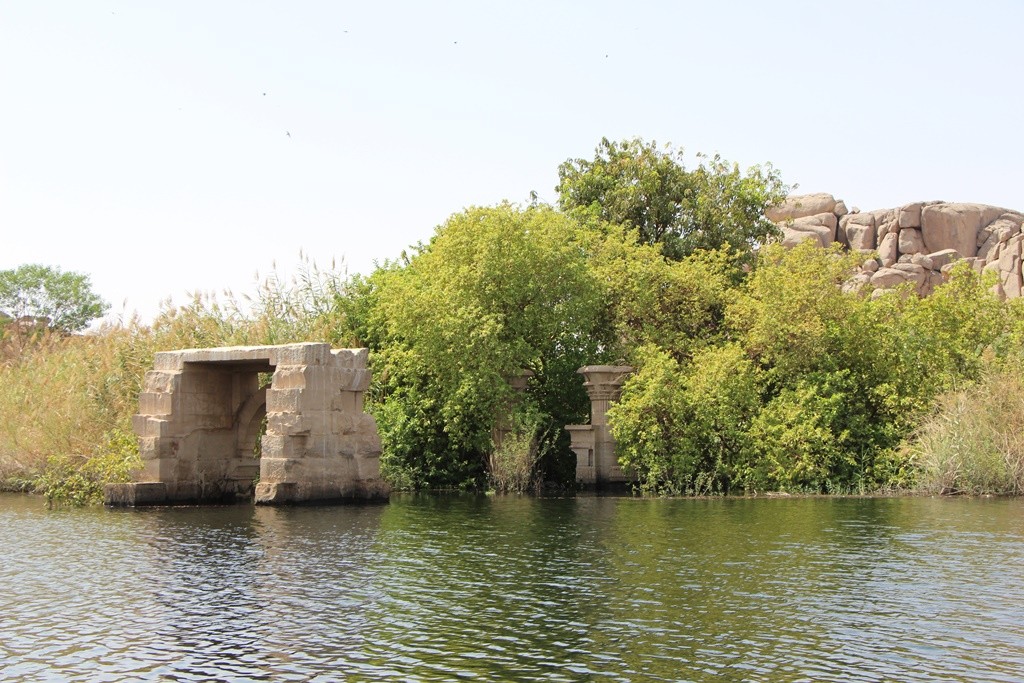 This was the original entrance to the Isis temple, but with the rising of the River Nile you cannot access it, except a few months a year when the tides are low. Magical entrance isn’t it!
This was the original entrance to the Isis temple, but with the rising of the River Nile you cannot access it, except a few months a year when the tides are low. Magical entrance isn’t it!
Isis Temple in Philae
Built to honour the goddess Isis, this was the last temple built in the classical Egyptian style. Its construction began around 690 BC, and it was one of the last outposts where the goddess was worshipped. The cult of Isis continued here until at least AD 550.
I enjoyed very much the delightful Temple of Hathor because it had on its walls reliefs of musicians, including an ape playing the lute, and Bes, the god of childbirth. South of this is the elegant, unfinished pavilion by the water’s edge, known as the Kiosk of Trajan, perhaps the most famous of Philae’s monuments and one that was frequently painted by Victorian artists, whose boats were moored beneath it.
The whole complex was moved from its original location on Philae Island, to its new location on Agilkia Island, after the flooding of Lake Nasser. A major multinational Unesco team relocated Philae, and a number of other temples that now dot the shores of Lake Nasser. You can see the submerged original island a short distance away, punctuated by the steel columns used in the moving process.
I was here with an international tour led by Rami’s Insight Tours . We had a few minutes to relax and meditate with our feet in the river. I felt a beautiful energy here, a surge of love and positivity, that I almost couldn’t hold back my tears. No it’s not a case of menopause. In Egypt, if you visit and are sensitive to energies, like myself and many other visitors, you will feel the huge shifts, all varying in their type, ie some will feel feminine, others extremely masculine. Wonderful feeling! Thank you Egypt.
During the Nile Cruise we also stopped to visit the KOM OMBO TEMPLE AND MUSEUM. Apart from a fantastic guide who was explaining a lot of features of the temple and was teaching us some symbols that recur in many hieroglyphics across Egypt, we also had some 30 minutes for ourselves, to do as we pleased. I took time to go into the temple and simply absorb as much as I could with my bare eyes, to touch the stones, to connect, and also enjoy the view from the temple out into a beautiful memorable sunset. I recall a wonderful feeling here of gratitude for this beautiful adventure of a lifetime. I did feel a shift in energy, a powerful energy of strength and courage for my next chapter in life.
KOM OMBO TEMPLE AND THE CROCODILE MUSEUM
Standing on a natural elevation at a bend in the Nile, where in ancient times crocodiles basked in the sun on the riverbank, is the Temple of Kom Ombo, one of the Nile Valley’s most beautifully sited temples. Unique in Egypt, it is dedicated to two gods; the local crocodile god Sobek, and Haroeris, meaning Horus the Elder.
The whole temple reflects its dual ownership, and even the Roman forecourt built by Augustus within the pylon was divided into equal shares for Sobek (east side) and Horus the Elder. In fact, an altar base is situated in the court’s center with small basins, meant to receive libations, sunk into the ground at each side for the respective gods. The court was surrounded in the south, west and north by colonnades (sixteen total columns). The western colonnade was divided into two by the double gate. The north and south colonnades ended before reaching the hypostyle hall. The relief carvings on some of the surviving columns of the colonnade along the forecourt’s sides are well preserved and many maintain their original colouring. Many depict images of the Roman emperor Tiberius.
Benevolent Yet Unpredictable. Sobek is the God of the Nile because he controlled the waters and the fertility of the soil. He is known under several titles, such as “Lord of the Waters,” “The Rager,” and “Lord of Faiyum”. He is also patron of the Military because of his strength, power and prowess.
The whole temple reflects its dual ownership, and even the Roman forecourt built by Augustus within the pylon was divided into equal shares for Sobek (east side) and Horus the Elder. In fact, an altar base is situated in the court’s center with small basins, meant to receive libations, sunk into the ground at each side for the respective gods. The court was surrounded in the south, west and north by colonnades (sixteen total columns). The western colonnade was divided into two by the double gate. The north and south colonnades ended before reaching the hypostyle hall. The relief carvings on some of the surviving columns of the colonnade along the forecourt’s sides are well preserved and many maintain their original coloring. Many depict images of the Roman emperor Tiberius.
CROCODILE MUSEUM
The museum displays over 40 mummified crocodiles and crocodile eggs of various sizes out of forty to have been unearthed in Aswan. The crocodiles are arrayed on a sand hill inside a large glass showcase, allowing visitors to see how crocodiles passed their days in ancient Egypt. A collection of crocodile coffins and wooden sarcophagi, along with crocodile foetuses and eggs, are also on display, in addition to stelae and statues depicting the crocodile-god Sobek, bearing a human body and the head of a crocodile.
Replicas of Sobek’s original tombs and niches are also on display.
I ve never seen anything like it. The Egyptians took the mummification of crocodiles pretty seriously!
Kids are so friendly
I was surprised at how at ease I feel the entire time I am in Egypt. The kids are extremely friendly and their happiness is so beautiful and humbling to see. I expected to get some extra attention as a white, non-Muslim woman with blonde hair travelling in Egypt. But what I didn’t expect was that I would become an instant celebrity every time I walked outside! At many major sites, me and my tour mates were constantly being approached by young Egyptians asking us for selfies! Cute 😉
The food in Egypt is unique and tasty
You’ll find a lot of traditionally Middle-Eastern foods in Egypt (like falafel and shawarma and kofta), and also some Moroccan dishes like tagine. But Egypt’s take is always a little unique – I noticed a lot of cinnamon in many dishes I tried! If you’re looking to try a unique Egyptian dish, go for a bowl of Kushari. It’s a mixture of rice, pasta, lentils, and chickpeas, topped with onion and a tomato sauce. It’s known as the national dish of Egypt, and can be had extremely cheap. I also love the fresh fruit juices made from their local fruit such as mango and guava.
This is the end of the first of a series of blogs from Egypt I hope you enjoyed it and I look forward to sharing more with you all.
Sending you love and good vibes your way!
xxx
Grazielle
This blog is brought to you in a collaboration with Rami’s Insight Tours and Airmalta
For more TRAVEL BLOGS from Egypt and other countries I ve visited, check out my TRAVEL Section.


